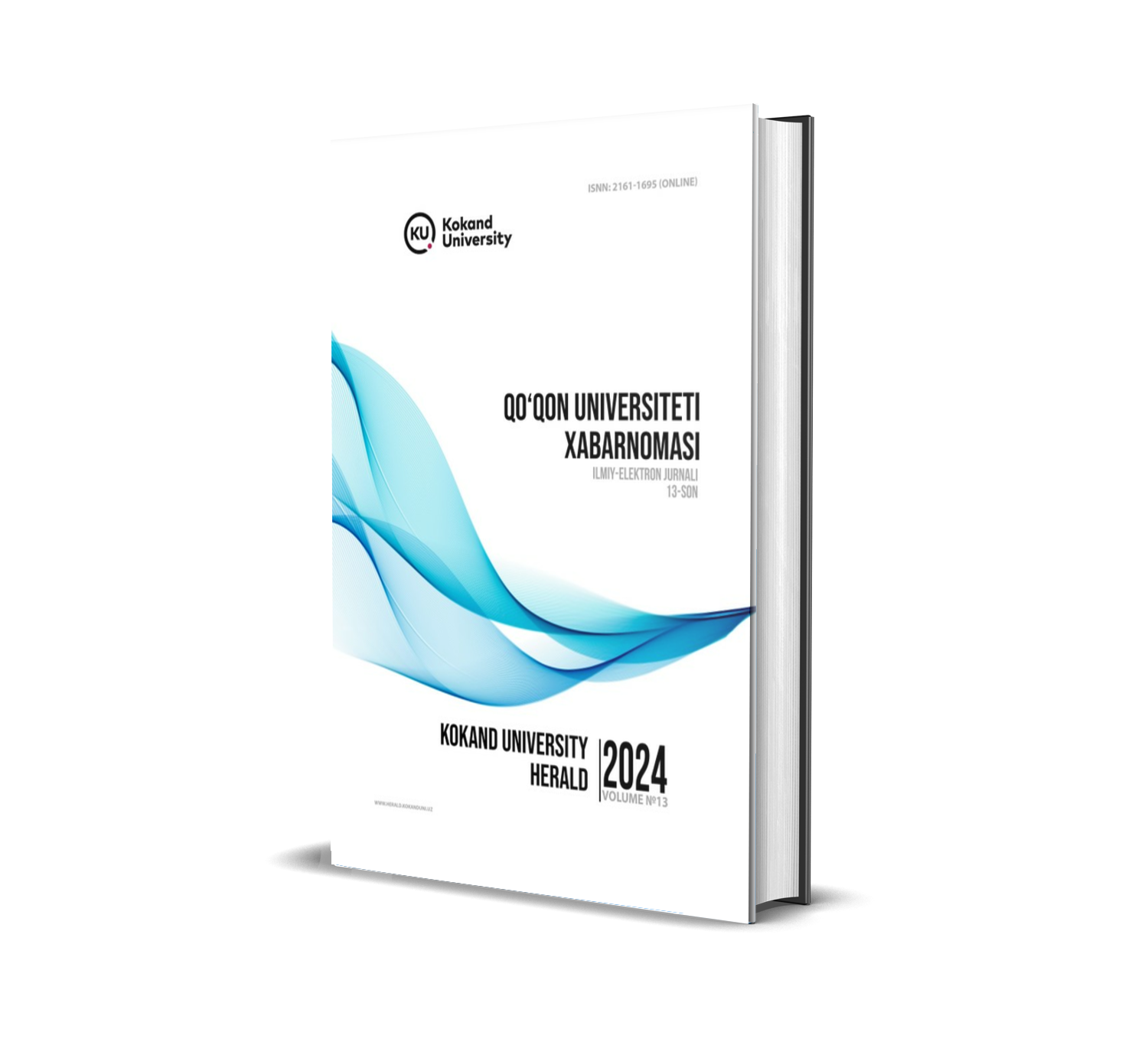CLASSIFICATION OF INTERACTIVE GENRES AND THEIR USAGE FEATURES IN INTERNET DISCOURSE
DOI:
https://doi.org/10.54613/ku.v13i.1088Keywords:
Interactive genres, internet discourse, digital communication, user engagement, social media, online forums, multimodal communication, discourse analysis, online interaction, virtual communication.Abstract
The study of interactive genres and their usage features in internet discourse is crucial to understanding the evolving landscape of digital communication. As online platforms continue to grow and diversify, so do the modes of interaction between users. This research aims to classify the various interactive genres in internet discourse and examine their distinctive features. Interactive genres are categorized based on their purpose, structure, and level of user engagement. We identify and analyze common genres such as social media posts, blogs, forums, comments, and live chats, exploring how each reflects the dynamics of virtual communication. The study also investigates the role of these genres in fostering interaction, shaping user identities, and influencing the flow of information. By examining both linguistic and non-linguistic features, including multi-modal communication, the paper provides a comprehensive understanding of how internet discourse facilitates new forms of social interaction. The findings offer insights into the complexities of online communication, highlighting the ways in which interactive genres contribute to the development of digital social practices.
Foydalanilgan adabiyotlar:
Baym, N. K. (2015). Personal Connections in the Digital Age. Polity Press.
Benoit, K., & Lareau, M. (2016). Social Media Genres and the Emergence of Online Communities. Communication Studies, 67(2), 184-199.
Bourdieu, P. (1991). Language and Symbolic Power. Harvard University Press.
Crystal, D. (2006). Language and the Internet. Cambridge University Press.
Dürscheid, C. (2017). Multimodal Communication on the Internet: Genres and Practices. Journal of Pragmatics, 115, 11-22.
Gee, J. P. (2014). An Introduction to Discourse Analysis: Theory and Method. Routledge.
Goffman, E. (1959). The Presentation of Self in Everyday Life. Anchor Books.
Herring, S. C. (2004). Computer-Mediated Discourse Analysis: An Approach to Researching Online Behavior. Sociology of Language, 2004(1), 47-67.
Herring, S. C. (2016). Discourse in Web 2.0: Practices and Perspectives. Cambridge University Press.
Jenkins, H., Ford, S., & Green, J. (2013). Spreadable Media: Creating Value and Meaning in a Networked Culture. New York University Press.
Kress, G., & van Leeuwen, T. (2001). Multimodal Discourse: The Modes and Media of Contemporary Communication. Arnold.
McMillan, S. J. (2000). Exploring the Role of the Internet in Social Interaction: Toward the Development of a Conceptual Model of Internet Uses and Gratifications. Communication Research, 27(1), 38-60.
Papacharissi, Z. (2010). A Private Sphere: Democracy in a Digital Age. Polity Press.
Shirky, C. (2008). Here Comes Everybody: The Power of Organizing Without Organizations. Penguin Press.
Yus, F. (2016). Online Interaction and the Role of the Internet in Everyday Communication. Pragmatics & Cognition, 24(1), 1-25.
Vokhidova, T. S. (2024). Internet linguistics: a new direction in description internet language. Zamonaviy fan va ta'lim yangiliklari xalqaro ilmiy jurnal, 2(5), 58-63.
Vokhidova, T. (2024). The relevance of using internet resources in teaching english. Zamonaviy fan va ta'lim yangiliklari xalqaro ilmiy jurnal, 2(5), 38-43.
Saidjonovna, V. T. (2024). Linguistic and cultural aspects of internet communication in uzbek. Kokand university research base, 301-307.
Vohidova, T. (2024). Influence of cultural dynamics on the evolution of digital communication. Talqin va tadqiqotlar ilmiy-uslubiy jurnali, 2(56), 201-205.
Mohinur, A. (2024). Project-based learning as a creative and innovative way of teaching english as a foreign language. University Research Base, 54-60.
Downloads
Published
Iqtiboslik olish
Issue
Section
License
Copyright (c) 2025 QO‘QON UNIVERSITETI XABARNOMASI

This work is licensed under a Creative Commons Attribution 4.0 International License.

